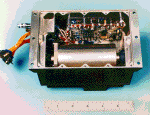

World-wide interest in the Surveyor missions to Mars continues to build at an exceptional rate. I have just returned from the 46th Congress of the International Astronautical Federation in Oslo, Norway, where the exploration of Mars was a frequent topic among the more than 700 technical papers presented to over 1200 persons in attendance. This annual conference of people from all over the world is a forum for discussing the most current topics and developments in the various aspects of the utilization of space. A major focus of the Congress is this utilization for the benefit of humanity of which planetary exploration is a major part.
Mars was a particular topic of interest because of upcoming launches of missions to the Red Planet by the United States, Russia and Japan. In the last two months of 1996, NASA's Mars Global Surveyor will be launched first, followed by Russia's Mars '96, and then NASA's Mars Pathfinder. In 1998, the Japanese will join two additional Mars Surveyor missions with their Planet B mission to Mars.
News of these missions is coming more and more into the public awareness, especially with products that support educational activities. For example, the Mars Global Surveyor project has recently released a five-minute video that describes the mission's sequence of events and science objectives. In addition, a 40-page booklet explains previous Mars exploration, gives a short description of the Red Planet itself, and provides a good overview of the Mars Global Surveyor spacecraft and its science instrument payload. The Project's world wide web page is continuously updated with news of the Project's progress toward launch on November 5, 1996.
Overall, Mars Global Surveyor is making excellent progress. We have just completed the last of our major technical design reviews, the Mission System Critical Design Review. This presentation of how the MGS mission will be conducted after launch, how the spacecraft will be navigated, how the aerobraking capabilities have been designed into the spacecraft and how the aerobraking operations will be conducted, as well as how the many other aspects of "flying" the mission spacecraft will be accomplished, was held in late September. The Project's Review Board, a group of highly respected technical and management experts from both within and outside JPL, found the design work to be satisfactory and recommended that work on its detailed implementation continue toward launch. This was a big accomplishment for the Project's mission system personnel and represents great confidence in the superb work they have done in the last year.
The MGS spacecraft began assembly at the Lockheed Martin Astronautics plant in Denver, Colorado, in September, and by the time you read this article, the major electronic boxes will have been installed on the side panels of the spacecraft's equipment module, powered up, and the detailed testing of the spacecraft will have begun. On a parallel track, the spacecraft's propulsion module, which contains the rocket engines, attitude control thruster and propellant tanks, is being built-up. It will join with the electronic equipment module early in 1996. One science instrument, the Ultra Stable Oscillator for the radio science experiments, has already been delivered, and the Mars Orbiter Camera and the Mars Relay will be delivered on the first of November. The remaining three instruments will arrive in December, March and April. In the early part of 1996, the spacecraft, after completing a set of very comprehensive electrical tests, will begin the series of tests to assure its operation in the very stressful environments of launch and in the extreme temperature variations that it will have to endure while cruising to and orbiting Mars.
